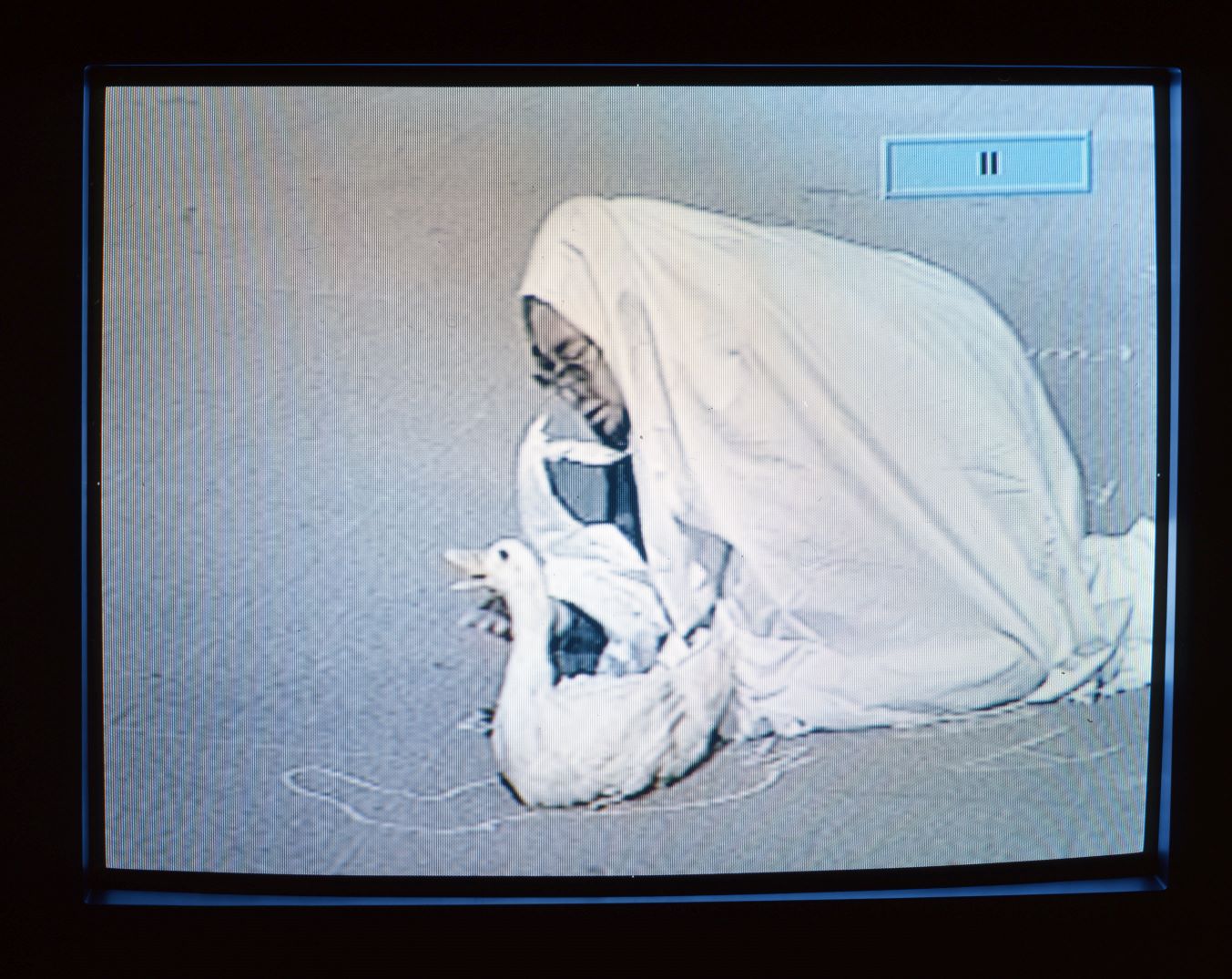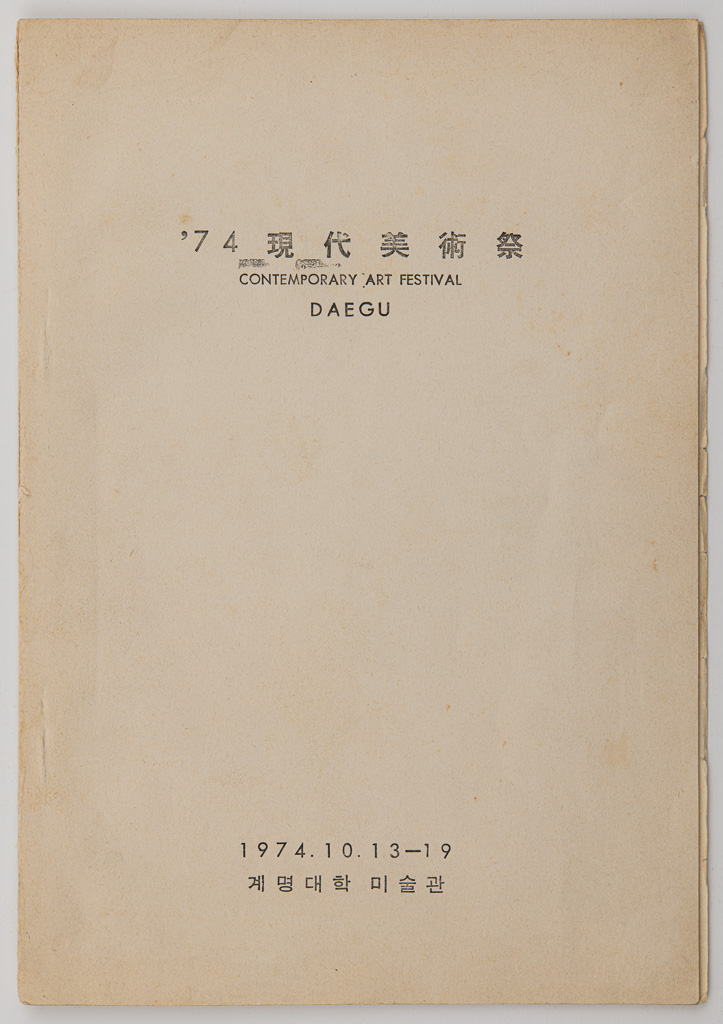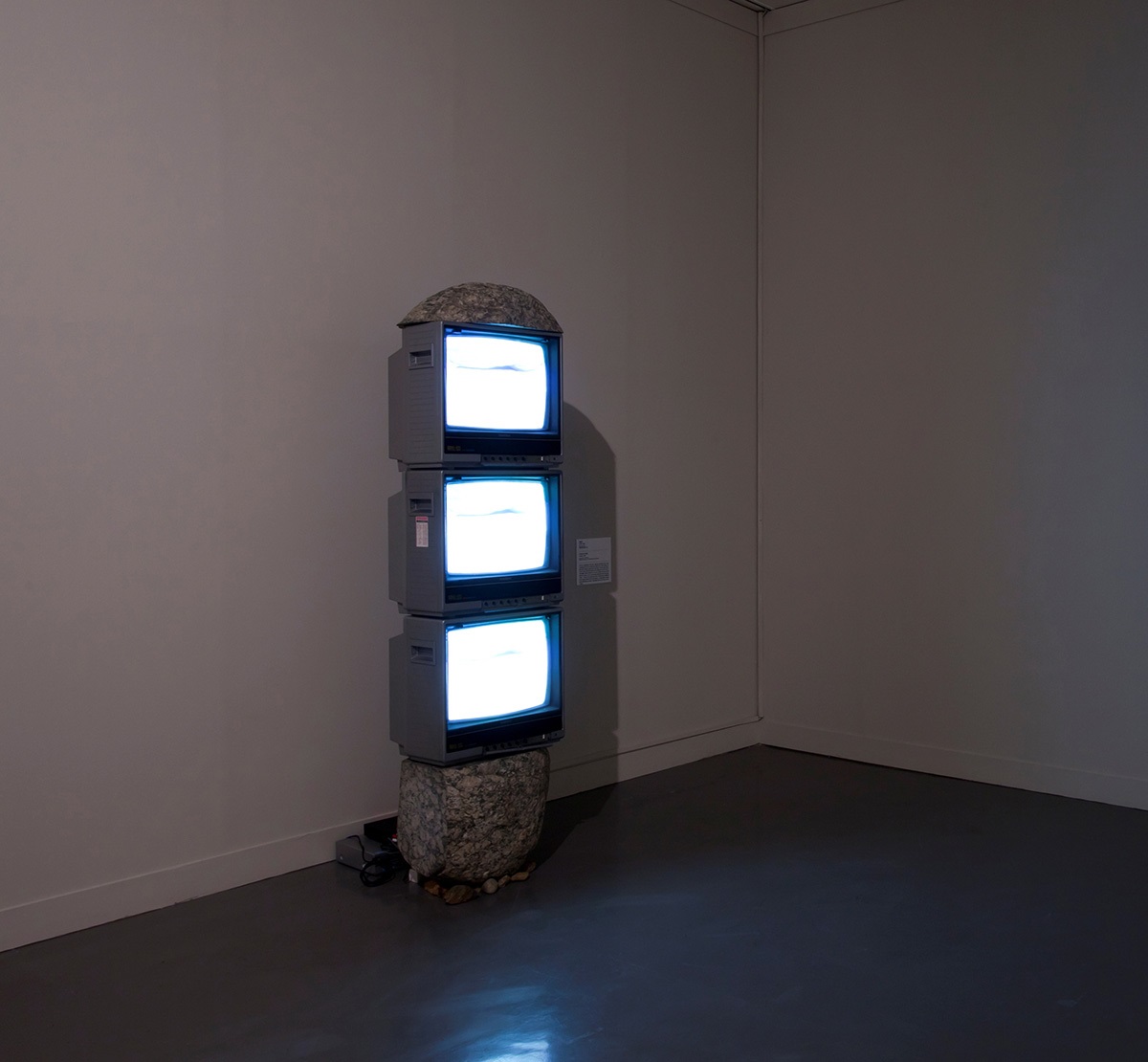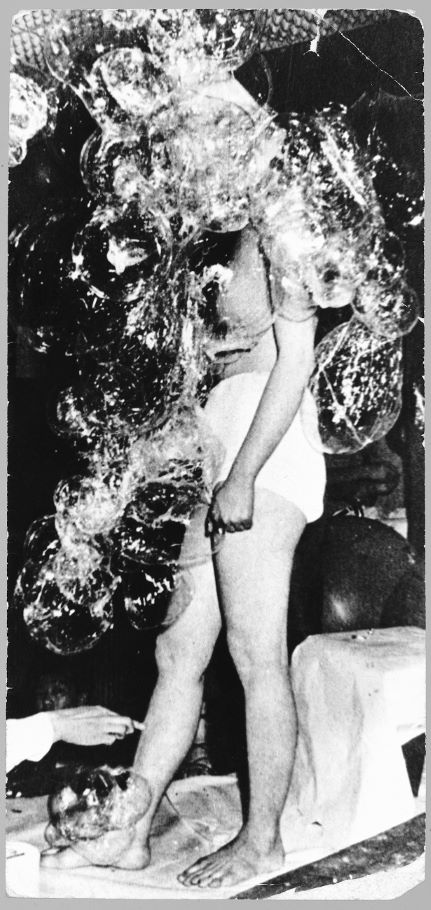
Kwak Duckjun, DUCK in DUCK, 1997, Single channel video, 10min. MMCA collection
Performace Video
* Source: MMCA
Related
-

Daegu Contemporary Art Festival
The Daegu Contemporary Art Festival was an annual contemporary art festival held in Daegu between 1974 and 1979. Three-dimensional works and paintings were frequently presented in the festival. The first exhibition (1974) and second exhibitions were primarily held in indoor exhibition halls, but the third exhibition expanded its venue to include both indoor and outdoor spaces. This third exhibition was divided into two parts, a major component of which was Lee Kangso, Park Hyunki, Chong Jaekyoo, Lee Jongyoon, and Jang Jeongjin’s collective outdoors piece titled Event in Nature. In addition, the Korean Art Association board members, including Park Seobo and Ha Chonghyun, came to Daegu to moderate a panel discussion about contemporary art and the concerns of avant-garde artists for the third exhibition. In the fourth exhibition, a significant inclusion was the video works of Park Hyunki, Kim Deoknyun, and Kim Youngjin, while in the fifth and final iteration of the festival, Lee Kun-Yong reenacted his piece Logic of Place, initially staged at the AG Exhibition (1975). In the contemporary period, The Gangjeong Daegu Contemporary Art Festival (Gangjeong daegu hyundae misulje), incepted in 2012, has continued in its tradition.
-

Park Hyunki
Park Hyunki (1942-2000) was a pioneering Korean video artist whose work focused on natural objects, such as water and stone, primarily using the medium of video. His oeuvre encompasses drawing, installation, performance art, and photography, among other genres. Born in Osaka, Japan, the artist returned to Daegu, his family’s hometown, in 1945 and settled in the city. He enrolled in the Department of Painting in the College of Fine Arts at Hongik University in 1961, but later changed his major to architecture. After graduation, he engaged both in the interior design business and artistic endeavors. Park has participated in the avant-garde art exhibition Daegu Contemporary Art Festival in Daegu since 1977. He was the first to experiment with video as a medium, thus significantly contributing to the development of Korean video art and the regional dissemination of experimental art. At the same time, he continued to join international exhibitions. The Water Tilting Performance featured at the Fifteenth São Paulo Biennale (1979) and Untitled (TV Stone Tower) submitted to the Eleventh Paris Biennale (1980) are the artist’s notable works that merge nature and media. In 1981, he also presented the performance project Pass through the City, in which he traversed the city center of Daegu with a giant stone to which a large mirror was attached on a trailer over sixteen meters long. From the 1990s onward and until his death, he continued his exploration of innovative mediums by working in photo-processing practice that he called “photo-media” and creating the installation The Mandala (1997), which composed geometric forms by assembling pornographic photos, and Presence and Reflection (1999), a video filming the movement of flowing water.
Find More
-

Performance
Performance is a genre within which artists use their voice, body, and objects to express their artistic vision through live action. It became popularized after World War II as an experimental genre through the work of John Cage and Merce Cunningham. Performance can be related to other movements of the period such as action painting, body art, happening, process art, Fluxus, and conceptual art. It is characterized by audience participation, improvisation, spontaneity, and provocativeness. The first work of performance in Korea is widely considered to be The Happening with Plastic Umbrellas and Candle Lights performed by Kang Kukjin, Chung Chanseung, Kim Youngja, Jung Kangja, Shim Sunhee, and Kim Inwhan during the Union Exhibition of Korean Young Artists held at the Korean Information Service Gallery in December 1967.
-

Video art
A genre of modern art that uses video as a medium. After Paik Nam June created the first works of video art in 1963, the genre spread internationally. Video art explored new artistic possibilities using advanced technology and embodied a rejection of conventional art media. Video art was quick to drawn critical attention because of the relative immediacy that underlies the creation and display of such works, and the efficiency of the medium as means to portray and interlink a large number of images. Following Paik Nam June ’s early experiments with TV monitor installations in the 1960s, in the 1970s new forms of work emerged that combined video and performance art.






